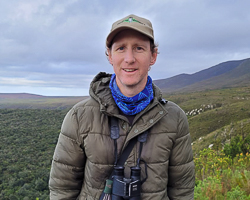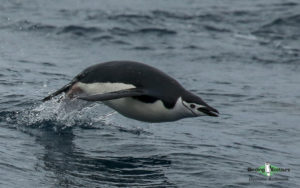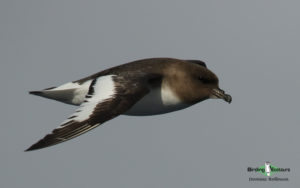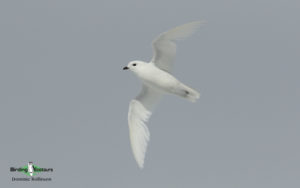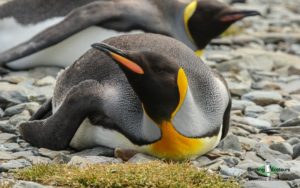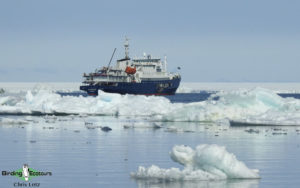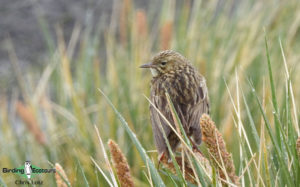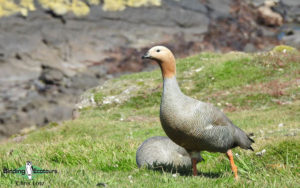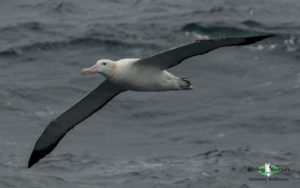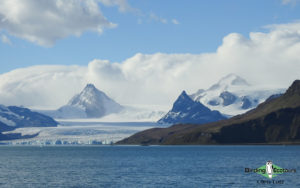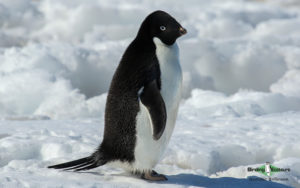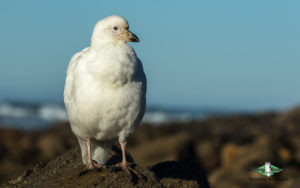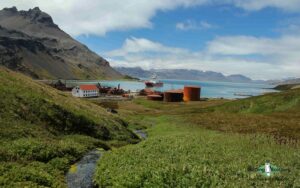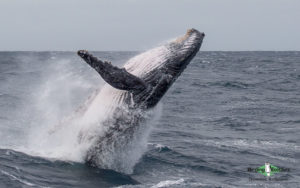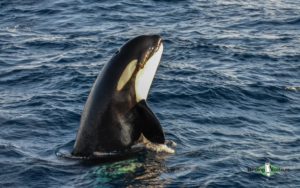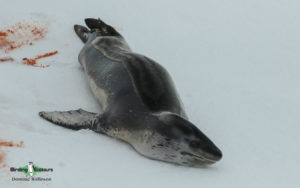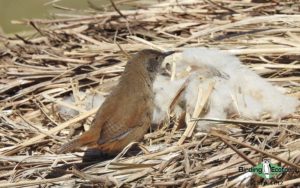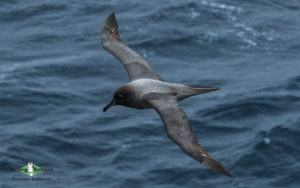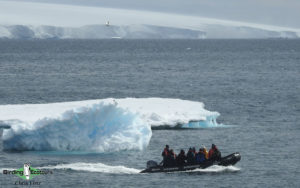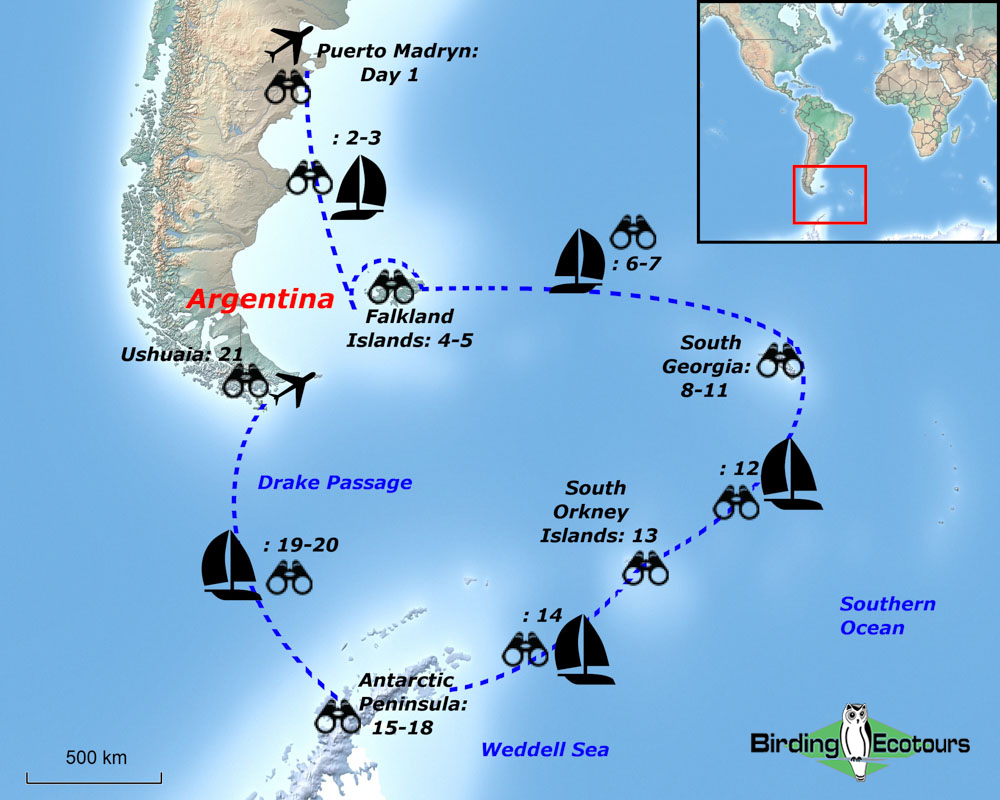Birding Cruise Antarctica: Falklands, South Georgia, and the Antarctic Peninsula
Birding Cruise Antarctica: Falklands, South Georgia, and the Antarctic Peninsula
January 2026/2027
This magnificent cruise starts in the world’s southernmost city, Ushuaia. This Argentinean city is bounded by the famous Beagle Channel on one side and by the mountains of Tierra del Fuego (“Land of the Fire”) on the other. We already start looking for “mainland” birds here before we set sail to the Falkland Islands, famed for the massive colonies of King Penguins (plus four other penguin species), Black-browed Albatross, and a fabulous suite of other charismatic birds as well as marine mammals. We then head to South Georgia, where we hope to find some endemic birds along with all the penguins, petrels and other seabirds, including one of the world’s most iconic birds, the massive Wandering Albatross. The next island archipelago we will visit is the South Orkney Islands which will provide sightings of large numbers of seabirds against a dramatic backdrop of spectacular scenery. We’ll eventually head to the Antarctic Peninsula itself, where we hope to see Snow Petrel and to add new penguin species to our list, among many other things. We’ll try (ice-permitting) to sail into the Weddell Sea. On our way back to Ushuaia, we’ll keep scanning the ocean for species we may have missed before – perhaps a Sooty or Light-mantled Albatross! The tour ends in the world’s southernmost city, Ushuaia. This Argentinean city is bounded by the famous Beagle Channel on one side and by the mountains of Tierra del Fuego (“Land of the Fire”) on the other and is a spectacular place to find oneself in!
Adelie and Chinstrap Penguins are abundant on this cruise.
For those who are keen to spend the day birding Ushuaia and its surroundings you can sign up for our 1-day Ushuaia birding tour where we will target the impressive Magellanic Woodpecker among other exciting birds, or perhaps for our more comprehensive 4-day Tierra del Fuego birding tour where additionally we will look for White-bellied Seedsnipe and many other important Tierra del Fuego specials, along with more widespread birds such as Andean Condor.
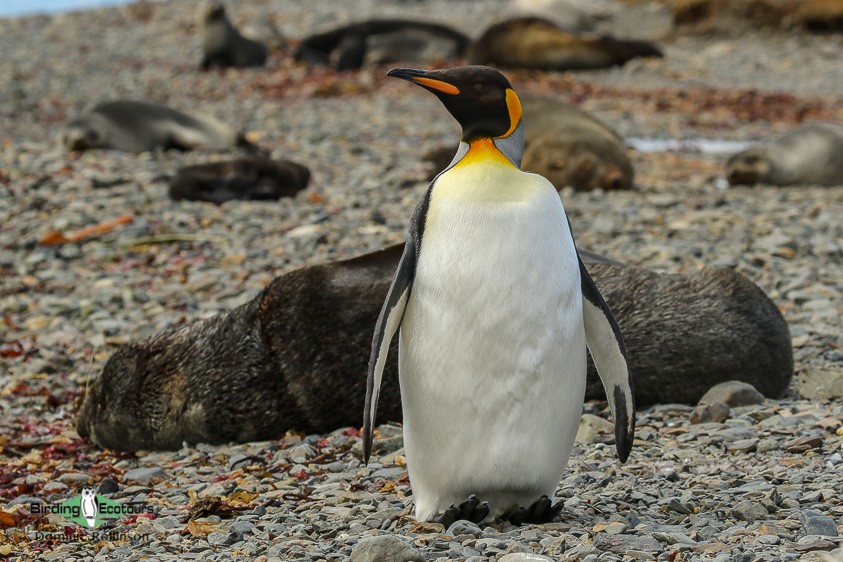
Itinerary (19 days/18 nights)
Day 1: Boarding of our vessel in Ushuaia
The Beagle Channel is home to the world’s southernmost city, Ushuaia in Tierra del Fuego, Argentina, and it is here where we will board our ship for the breathtaking Antarctic region. We will spend the evening admiring the captivating passing scenery.
Day 2: Sailing towards the Falkland Islands
We spend the entire day at sea in the direction toward the Falkland Islands. The prevailing winds from the west will bring us a wide range of remarkable birds, such as diving and storm petrels, a variety of albatrosses, and some shearwaters.
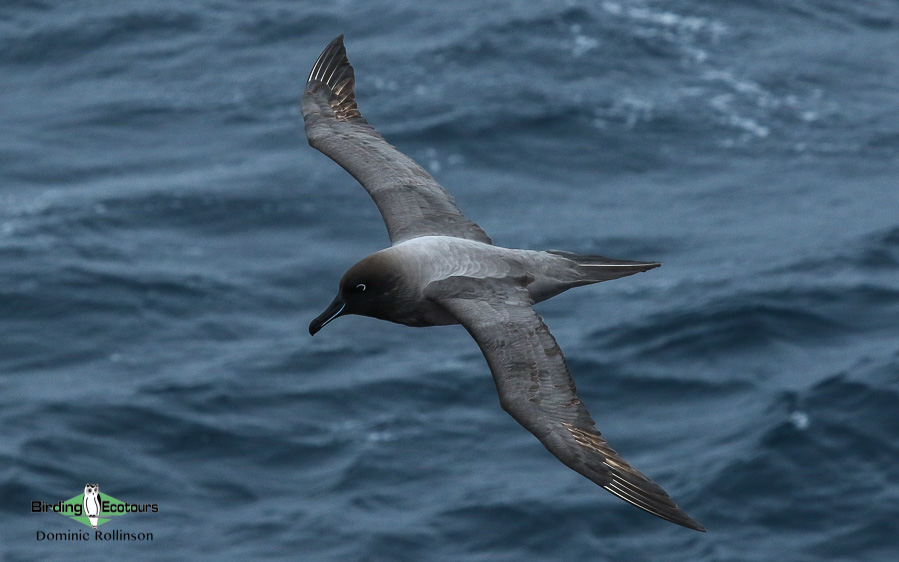
Day 3: Exploring the Falkland Islands
Our first day exploring the Falkland Islands will be spent in the western part, which will include a visit to Carcass Island. Here a walk on the shoreline will reward you with marvelous sightings of Gentoo and Magellanic Penguins, passerines such as the endemic races of Blackish Cinclodes, White-bridled Finch, Dark-faced Ground Tyrant, Correndera Pipit, and Austral Thrush, as well as close-up views of waterfowl species including White-tufted Grebe, Upland, Kelp and Ruddy-headed Geese, Falkland Steamer Duck, Chiloe Wigeon, Yellow-billed Pintail and Silver Teal.
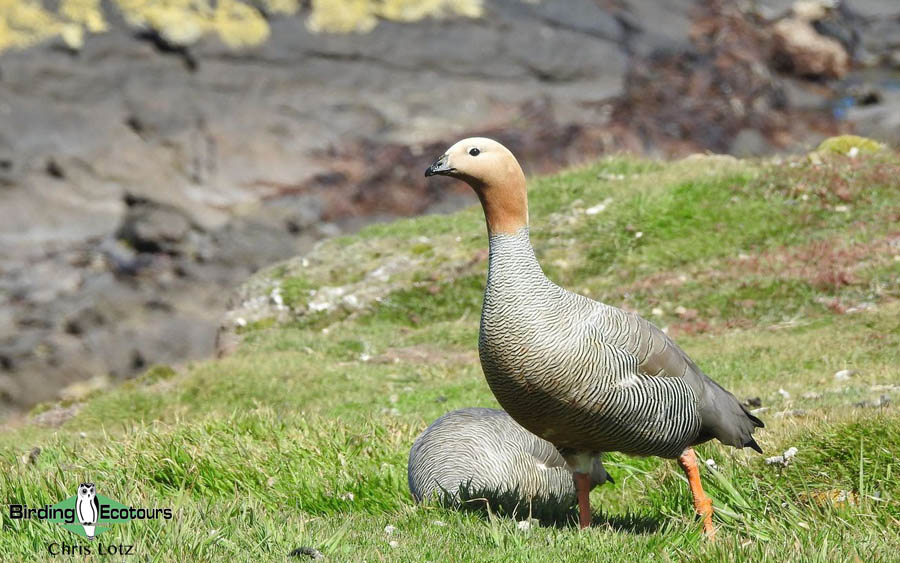
As we discover Saunders Island, the rare sight of four species of breeding penguins can be seen. These are the magnificent Southern Rockhopper, Magellanic, King, and Gentoo Penguins. Other remarkable birds to observe will include Imperial Shag and Black-browed Albatross.
As we maneuver around the islands, we may come across attractive Peale’s and Commerson’s Dolphins!
Day 4: Discovering Stanley
We spend the day exploring the Falklands’ capital, Stanley. Birding is generally good nearby to town where we might get views of King and Gentoo Penguins, Imperial Shag, Upland Goose, Dolphin Gull and Falkland Steamer Duck with a decent selection of passerines available too including White-bridled Finch, Austral Thrush and the striking Long-tailed Meadowlark. This is the ideal opportunity for you to experience the island’s culture, which is a perfect blend of old British charm and South American style. It is difficult to miss the long-ago-stranded shipping vessels that dot the coastline. There are several local and cultural attractions to visit in Stanley, including the museum and church (admission fees at your own expense), and you may spend some time visiting the area by yourself.
Days 5 – 6: En route to South Georgia
The next two days will be spent en route to breathtaking South Georgia. Sailing across the Antarctic Convergence and entering the much cooler Antarctic waters, you can now expect significantly cooler temperatures. As we head toward the Antarctic Convergence, we should start to see several kinds of fabulous birds such as petrels, skuas, albatrosses, prions, and shearwaters.
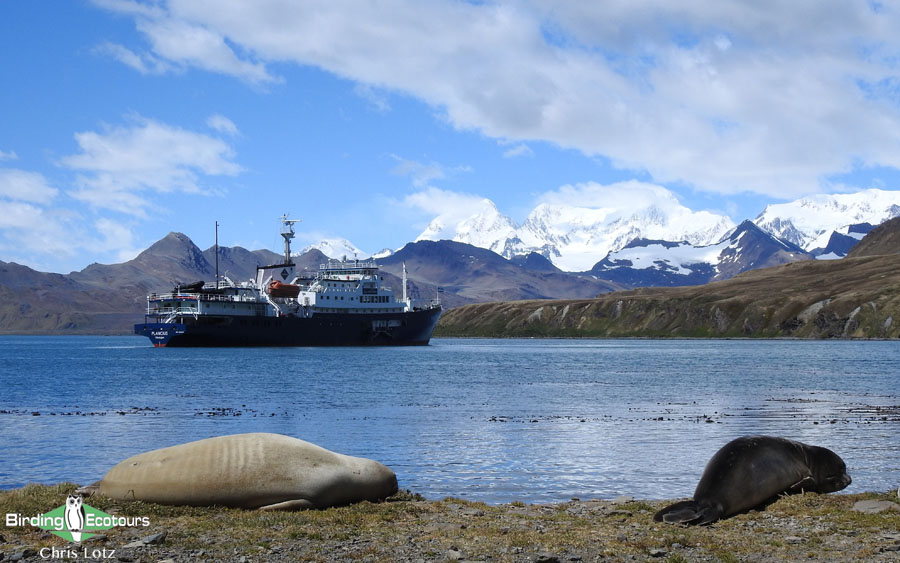
Days 7 – 10: Exploring and birding South Georgia
Our arrival in spectacular South Georgia will be in the early afternoon. If conditions are favorable, we could visit the Bay of Elsehul, which is home to an extremely active Antarctic Fur Seal breeding beach.
Later we will sail directly to Right Whale Bay, Salisbury Plain, Godthul, St Andrews Bay, Gold Harbor, Cooper Bay, and Drygalski Fjord to give you the best chance to view a large array of the most stunning scenery and wildlife. This should hopefully include the likes of Macaroni Penguin, King Penguin, Southern Elephant Seal and Antarctic Fur Seal. We will of course look for South Georgia Pipit (the most southerly occurring passerine) which, since the eradication of rats from the island, are now fairly widespread!
Prion Island and the surrounding waters are always a treat! Here we should experience first-hand views of the immense Wandering Albatross. (Note that the island is closed for visitors during breeding season from 20 November to 07 January, but we are almost bound to see the species flying around, if not at the breeding grounds themselves).
Depending on the group and other conditions, once we reach Fortuna Bay we could do exactly as the noble British explorer Ernest Shackleton did and hike all the way over to Stromness Bay.
Grytviken affords you the thrilling opportunity to see an abandoned whaling village. Instead of humans, King Penguins now roam the streets, and seals now occupy the buildings. This is certainly a sight to see! The South Georgia Museum in Grytviken, a whaling history museum, as well as Ernest Shackleton’s grave, are not-to-miss sights in this area.
We leave South Georgia on Day 10 in the afternoon.
Day 11: Birding on the water
Although we spend the entire day at sea, there is certainly no shortage of seabirds! The birds and birding may change, especially if the vessel encounters sea ice, as this is where we are likely to observe some special, high Antarctic birds such as Snow Petrel or South Polar Skua.
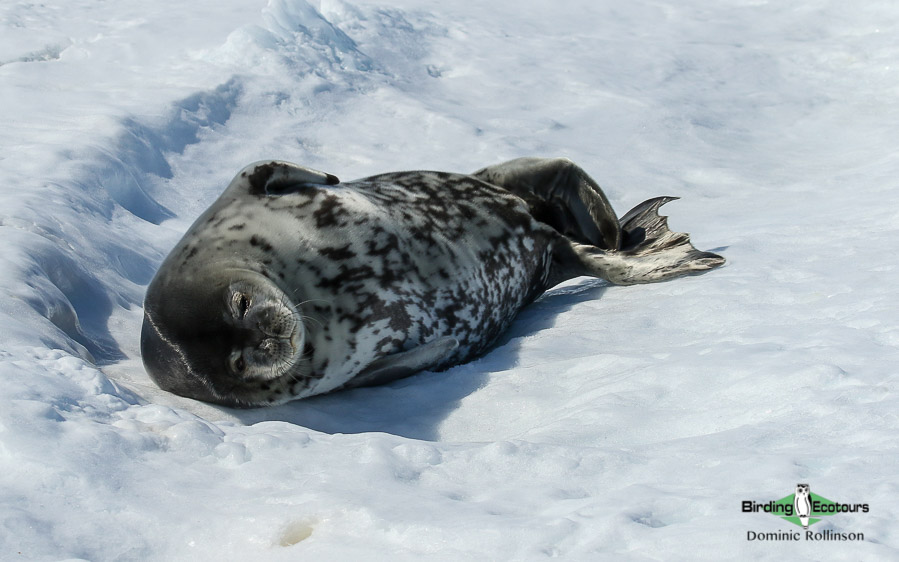
Day 12: Orcadas Station, South Orkney Islands
Today we may visit Orcadas Station (weather dependent), which is an Argentinean base situated on Laurie Island in the South Orkney Islands archipelago. Here you will be greeted by the friendly staff of the base, who will give us a tour of their premises. We will also take in the spectacular views of the glaciers surrounding us. Alternatively, we could attempt a berthing on Coronation Island at Shingle Cove.
Day 13-14: At sea en route to Antarctica
These days will be spent admiring the magnificent scenery from the vessel. Be sure to have your camera ready as we pass spectacular icebergs. There is also a good possibility of spotting Fin Whale and Antarctic Petrel.
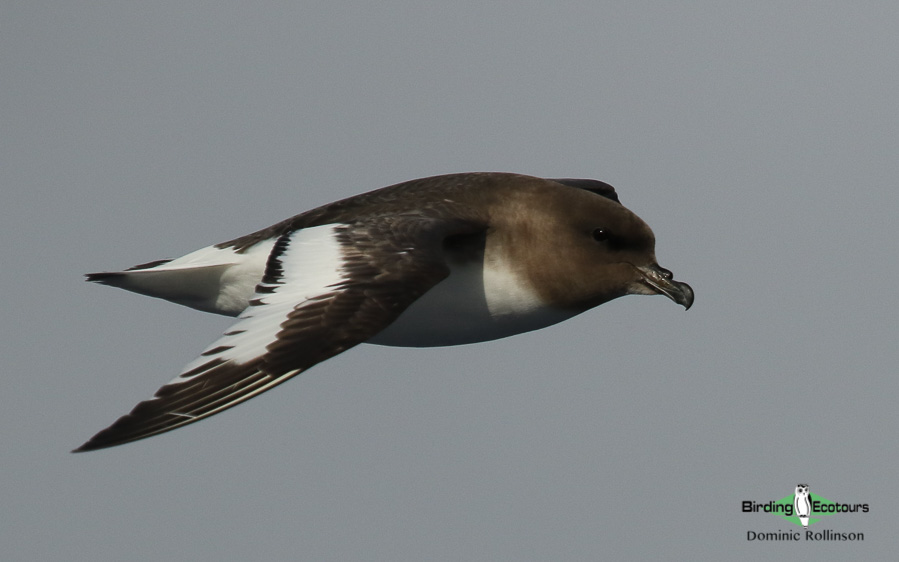
Days 15 – 16. The magnificent Antarctic Peninsula
Ice conditions permitting, we will sail through the icy Antarctic Sound and into the famed Weddell Sea. As we arrive at the eastern side of the Antarctic Peninsula it is difficult not to stand in awe of the grand, tabular icebergs that greet us!
An exciting visit to Paulet Island will reveal Brown Bluff and an immense number of Adelie Penguins. If conditions are favorable, we may be able to set foot on the continent. Hopefully the weather will allow us to spend some more time in the Weddell Sea.
Although the South Shetland Islands are volcanic and windswept in nature and are often very misty, they do offer great natural delights such as a wide range of flora (beautiful flowering grasses, lichens, and mosses) and fauna (including Chinstrap Penguin, Gentoo Penguin, and Southern Giant Petrel).
The unique Chinstrap Penguin can be observed in all its glory during our visit to Half Moon Island, while the ever-so-cheeky Weddell Seal can be clearly spotted on the beach close to Cámara Base (the Argentinean scientific research station).
To reach our next destination, Deception Island, our ship will barrel through the amazing Neptune’s Bellows, the crater’s entrance; the island is a subducted crater opening into the sea, forming a natural harbor for our vessel. On Deception Island, there is incredible birdlife! You can view species such as Antarctic Tern, Black-bellied and Wilson’s Storm Petrels, South Polar Skua, Kelp Gull, and thousands of Cape Petrels.
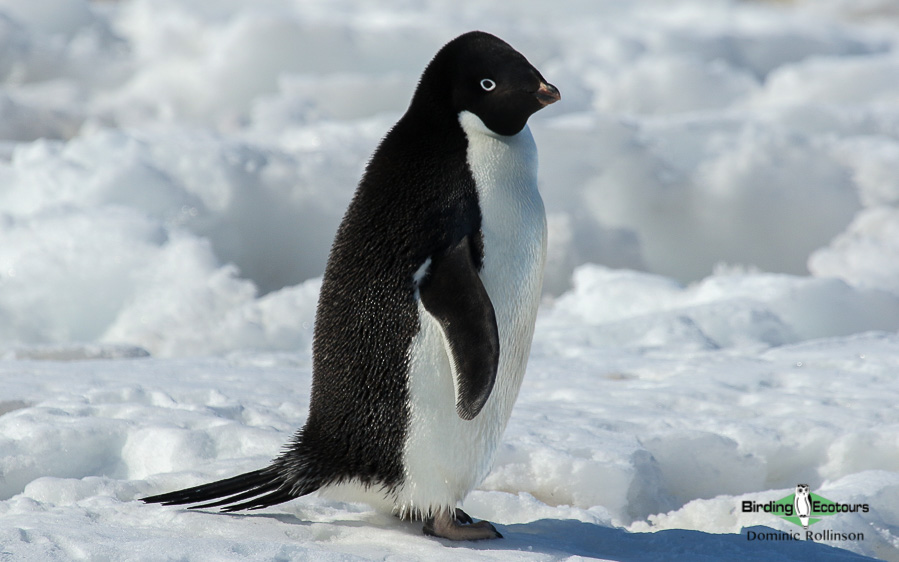
Days 17 – 18. Birding on the ship en route to Ushuaia
These days are spent on board the vessel on our way back to Ushuaia. As we cross the Drake Passage we can observe a large number of spectacular seabirds.
Day 19: Disembarkation from our vessel in Ushuaia
Arrival in Ushuaia in the morning and disembarkation after an amazing 19-day bird- and wildlife-filled scenic adventure.
IMPORTANT: This is a standard itinerary to the Falklands Islands, South Georgia, and Antarctic Peninsula regions. It is for illustration purposes only, and actual schedules could change due to various factors such as weather, berthing availability, and wildlife opportunities. The tour leader will decide on the eventual itinerary, and it is therefore essential to remain flexible. The vessel cruises at an average speed of 10.5 knots.
Download Itinerary